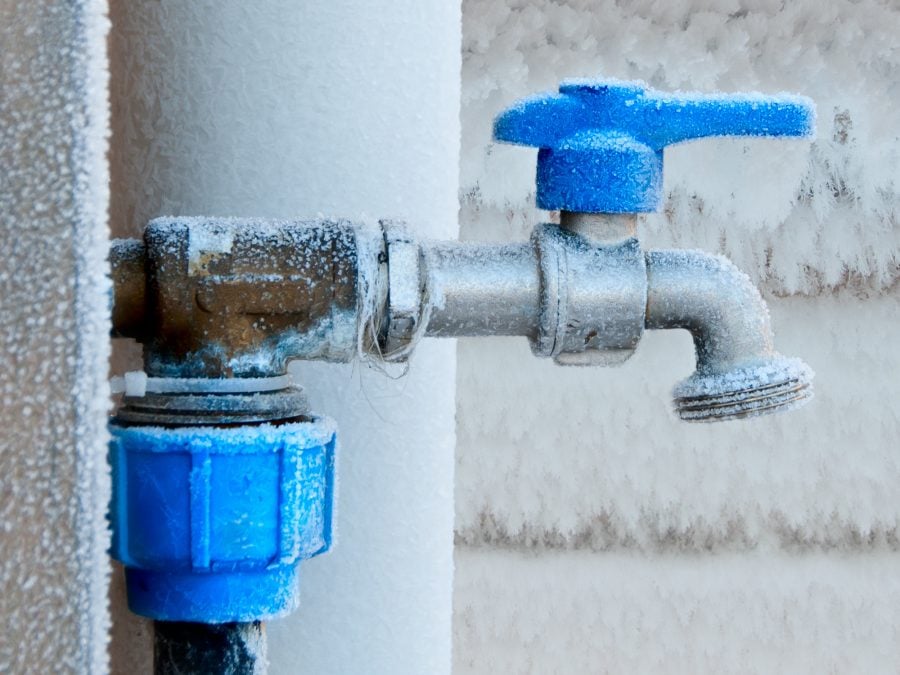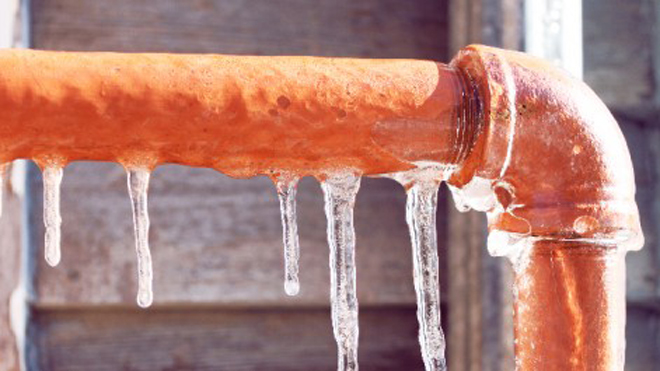Essential Tips to Prevent Frozen Plumbing in Winter
Essential Tips to Prevent Frozen Plumbing in Winter
Blog Article
What're your thoughts and feelings about Helpful Tips to Prevent Frozen Pipes this Winter?

Winter can ruin your plumbing, particularly by freezing pipes. Right here's how to avoid it from happening and what to do if it does.
Introduction
As temperatures decline, the threat of frozen pipes increases, potentially resulting in costly repair work and water damages. Understanding exactly how to avoid frozen pipelines is essential for homeowners in cold climates.
Avoidance Tips
Shielding at risk pipes
Cover pipelines in insulation sleeves or use warmth tape to safeguard them from freezing temperatures. Concentrate on pipes in unheated or outside areas of the home.
Heating techniques
Maintain indoor spaces adequately heated up, specifically areas with plumbing. Open up cabinet doors to enable warm air to flow around pipelines under sinks.
Exactly how to identify frozen pipelines
Try to find decreased water flow from taps, unusual smells or noises from pipelines, and visible frost on subjected pipelines.
Long-Term Solutions
Architectural adjustments
Consider rerouting pipelines far from exterior wall surfaces or unheated locations. Add additional insulation to attics, basements, and crawl spaces.
Updating insulation
Purchase top quality insulation for pipes, attics, and walls. Correct insulation helps keep constant temperature levels and minimizes the threat of frozen pipes.
Securing Outside Plumbing
Garden hose pipes and exterior faucets
Detach and drain garden hoses before winter season. Set up frost-proof spigots or cover exterior taps with insulated caps.
Recognizing Frozen Pipes
What creates pipelines to freeze?
Pipelines freeze when exposed to temperature levels listed below 32 ° F (0 ° C) for prolonged durations. As water inside the pipes freezes, it expands, taxing the pipeline wall surfaces and possibly causing them to rupture.
Dangers and damages
Frozen pipes can bring about water supply interruptions, property damages, and pricey fixings. Ruptured pipelines can flood homes and cause considerable structural damage.
Signs of Frozen Piping
Recognizing icy pipelines early can stop them from breaking.
What to Do If Your Pipes Freeze
Immediate actions to take
If you think icy pipelines, maintain faucets open to ease stress as the ice thaws. Utilize a hairdryer or towels taken in hot water to thaw pipes gradually.
Final thought
Preventing icy pipelines requires proactive measures and quick responses. By understanding the reasons, indications, and preventive measures, house owners can safeguard their plumbing throughout winter.
6 Proven Ways to Prevent Frozen Pipes and Protect Your Home
Disconnect and Drain Garden Hoses
Before winter arrives, start by disconnecting your garden hoses and draining any remaining water. Close the shut-off valves that supply outdoor hose bibs and leave the outdoor faucet open to allow any residual water to drain. For extra protection, consider using faucet covers throughout the colder months. It’s also important to drain water from any sprinkler supply lines following the manufacturer’s directions.
Insulate Exposed Pipes
Insulating your pipes is an effective way to prevent freezing. Pipe insulation is readily available at home improvement stores and is relatively inexpensive. Pay close attention to pipes in unheated areas such as the attic, basement, crawl spaces, or garage. Apply foam insulation generously to create a buffer against the cold. You can also wrap your pipes in heat tape or thermostat-controlled heat cables for added warmth.
Seal Air Leaks
Inspect your home for any cracks or openings that could let in cold air. Seal any holes around the piping in interior or exterior walls, as well as the sill plates where your home rests on its foundation. Additionally, make sure to keep your garage door closed unless you’re entering or exiting. Leaving it open creates a significant air leak that can lead to frozen pipes.
Allow Warm Air Circulation
During cold snaps, it’s essential to allow warm air to circulate evenly throughout your home. Leave interior doors ajar to promote better airflow. Open kitchen and bathroom cabinets to help distribute heat consistently around the rooms. If you have small children or pets, be sure to remove any household chemicals or potentially harmful cleaners from open cabinets for safety.
Let Faucets Drip
A small trickle of water can make a big difference in preventing ice formation inside your pipes. When temperatures drop significantly, start a drip of water from all faucets served by exposed pipes. This continuous flow helps prevent the water from freezing. Additionally, running a few faucets slightly can relieve pressure inside the pipes, reducing the chances of a rupture if the water inside does freeze.
https://choateshvac.com/6-proven-ways-to-prevent-frozen-pipes-and-protect-your-home/

As an enthusiastic reader about How To Avoid Freezing Pipes, I figured sharing that excerpt was important. Appreciated our entry? Please share it. Help others check it out. Bless you for your time. Revisit us soon.
Additional Resources Report this page